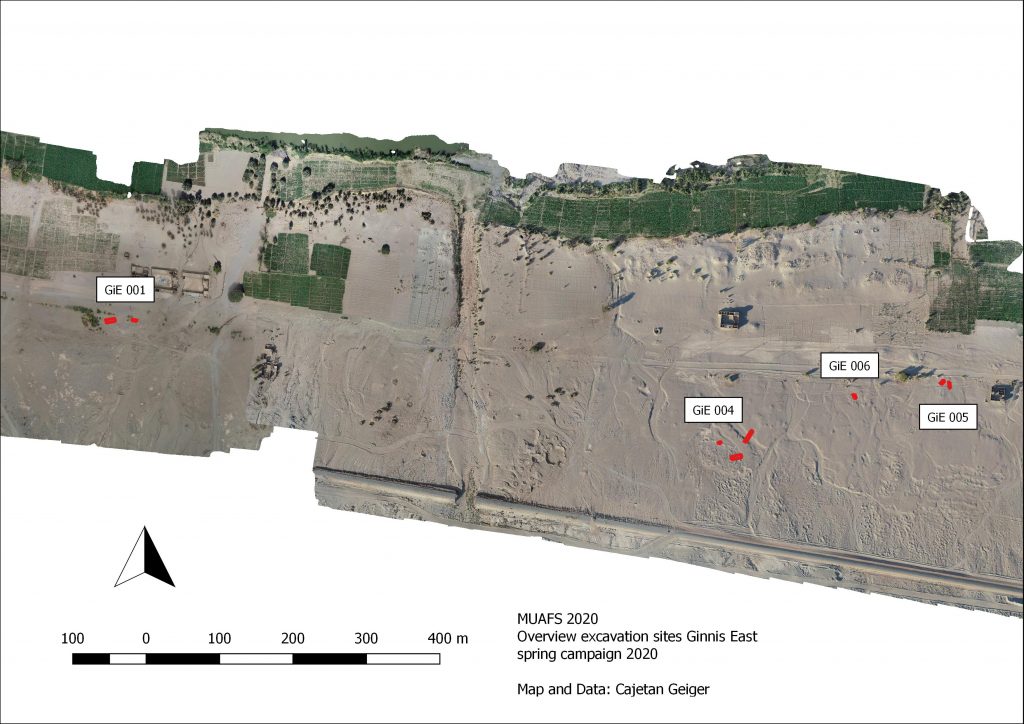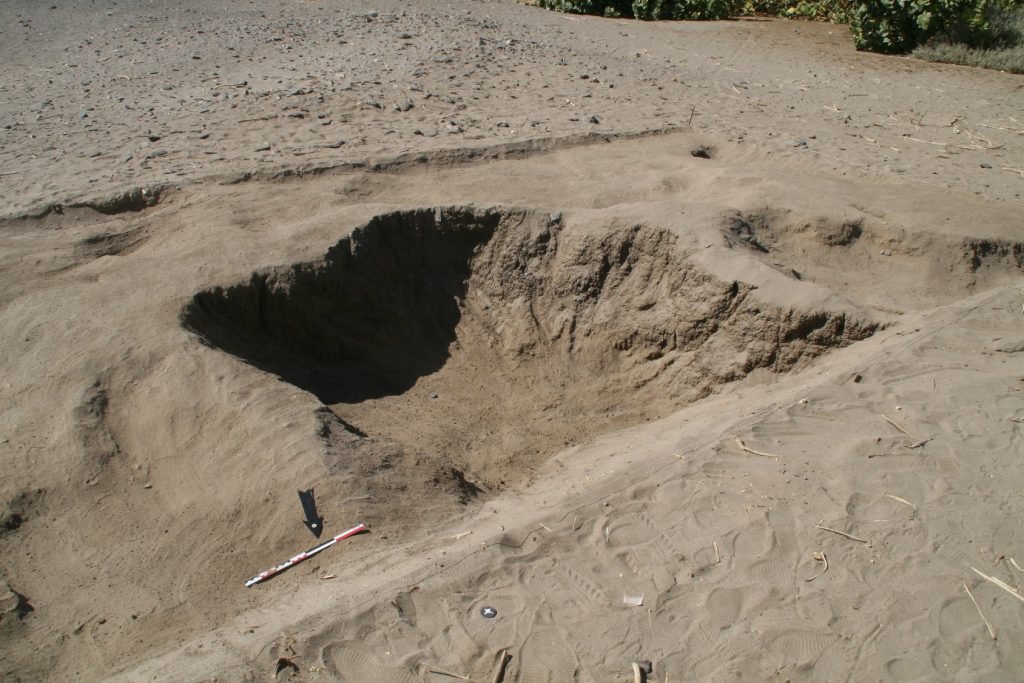The world has changed since last week – COVID-19 has a major influence on archaeological fieldwork, universities and museums. MUAFS was very lucky in this respect – after our odyssey with the extra day in Khartoum and a night in Istanbul, we made it safely to Munich, just in time before borders got closed and flights cancelled. Of course all planned fieldwork in Egypt in April had to be cancelled and I could also not make my home visit to Vienna. But difficult times require flexibility and the most important thing now is of course to flatten the curve and to stay safe (and home)!
Well – research for MUAFS is of course still possible and all of us are using the time in home office for reading things and compiling the data from the 2020 season.
The following is just a short summary of our test excavations of the 2020 season – this season was a preparation season for the next, longer field season which will be the start of my new European Research Council Project DiverseNile. Thus, the focus was on promising sites dating to the Bronze Age/Kerma Period in the Ginis East area where also Egyptian presence of the New Kingdom is attested.
In order to get familiar with the site formation processes and sedimentation in the area, we conducted at four sites in the district of Ginis East small test excavations. A total of 8 trenches were excavated by the team; local workmen will be engaged in the next season.

As you will see in the following – the results from the individual sites were not as we hoped for but are nevertheless very important outcomes of what was designed as a test season.
I will start with site GIE 001 and a separate post will present the results from the other sites at Ginis East.
GiE 001 – a New Kingdom (and Kerma?) settlement site
Recorded by Vila as 2-T-36B, this domestic site at Ginis East can be assigned to the Egyptian New Kingdom, showing also an intriguing Kerma presence according to the surface finds. Magnetometry was conducted by MUAFS in 2019. In the 2020 season, two trenches were laid out above promising anomalies in the magnetometry in the northeastern part of the site.
Trench 1 (6 x 4 m) yielded, apart from surface finds which were mixed and dated from the Kerma Period, the New Kingdom, the Napatan Period and Christian times, some Kerma Classique sherds from lower levels. However, no structures were found and the magnetometry seems to show natural features, especially more sandy areas which contrast to clay layers/alluvial sediments.
Trench 2 (10 x 4 m) generated large quantities of ceramics and stone tools from the surface. The main archaeological features found in this trench were sub-recent pits deriving from marog activities. The largest of these pits in Trench 2, Feature 1, is 2.40 m in diameter and 75 cm deep. It was filled with fine sand and the traces of the tools the marog diggers used are clearly visible on the sloping edges. We documented everything in 3D according to our standard procedure. The find material comprised mostly mixed pottery from the New Kingdom, Napatan and Medieval era as well as some recent date seeds and small pieces of charcoal and bone.

Both trenches in GiE 001 did not yield mud bricks or any structures from the New Kingdom; it is likely that this part with the trenches is already located outside of the former settlement area. That the area was inhabited and used during both the 18th Dynasty and the Ramesside period, becomes nevertheless evident from the find assemblages we collected.
Excavation and processing of data at GIE 001 will continue, but for now the New Kingdom site with later use seems associated with gold exploitation in the periphery of Sai Island and Amara West, as I have already proposed in an earlier post based on the finds (ceramics and stone tools).
